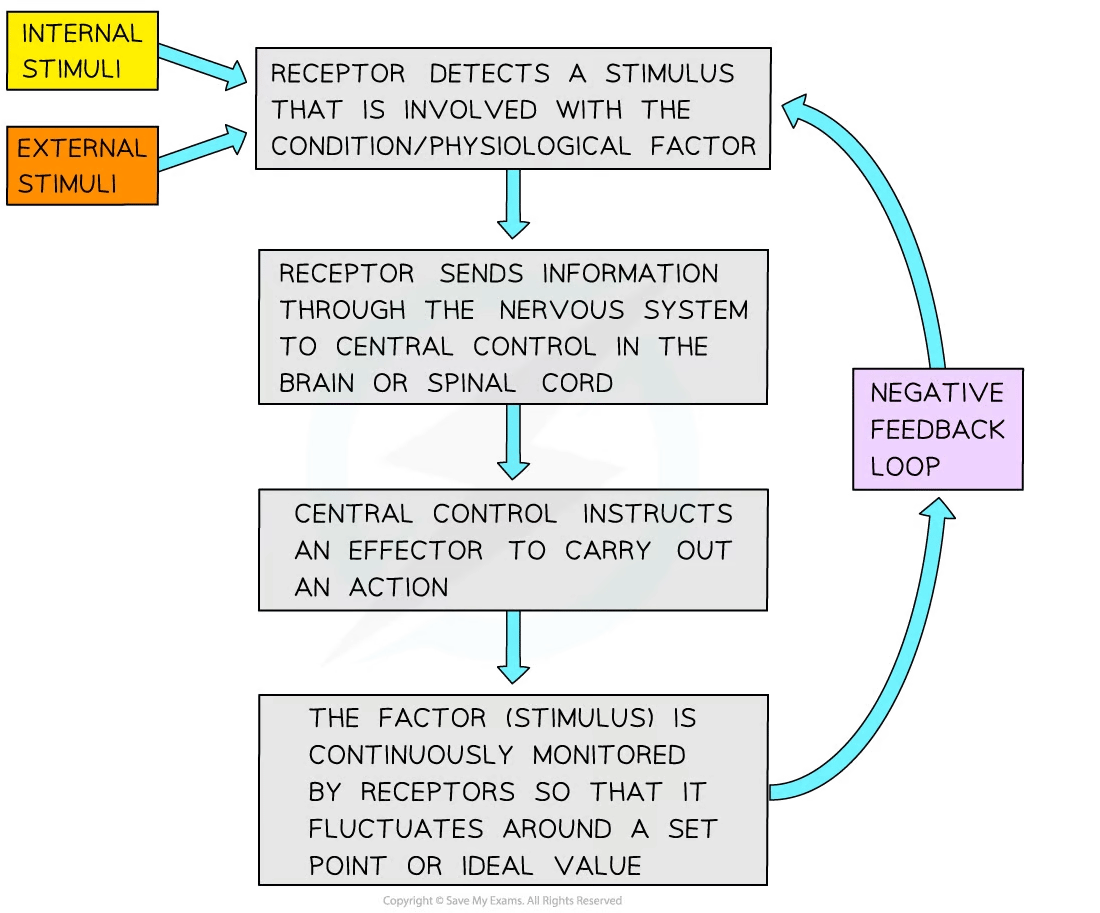Feedback Mechanisms
- The process of maintaining a constant internal environment is known as homeostasis
- Homeostasis relies on monitoring information received back from the body, known as feedback
- Acting on feedback information ensures that conditions inside the organism are kept within preset limits
- Homeostasis is critically important for organisms as it ensures the maintenance of optimal conditions for enzyme action and cell function
- Sensory cells can detect information about the conditions inside and outside the organism; if conditions have changed then the organism can respond to keep conditions constant
- Examples of physiological factors that are controlled by homeostatic feedback in mammals include
- Core body temperature
- Blood pH
- Concentration of glucose in the blood
- Osmotic concentration of the blood
- Feedback (positive) can also act to bring about a specific event; Examples include:
- Ovulation
- Labor in childbirth
- Lactation in mammals
- Ripening of fruit






